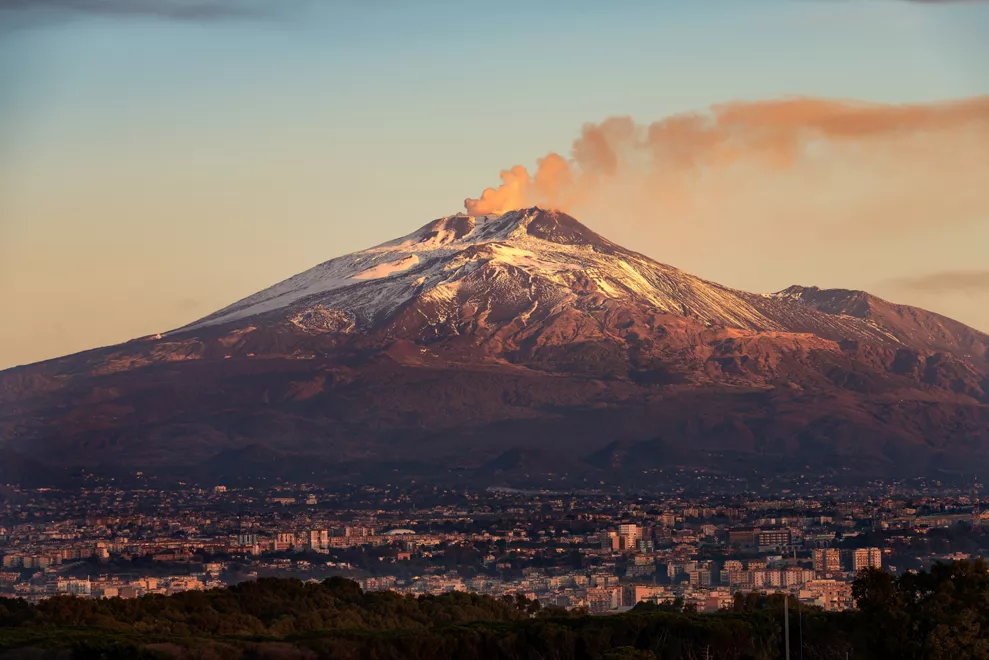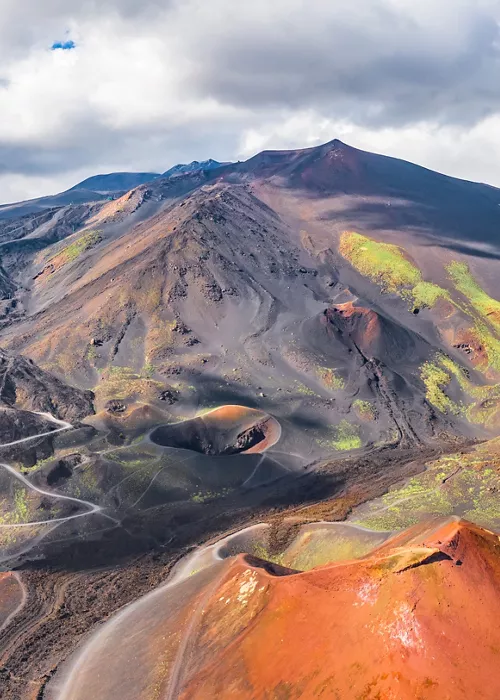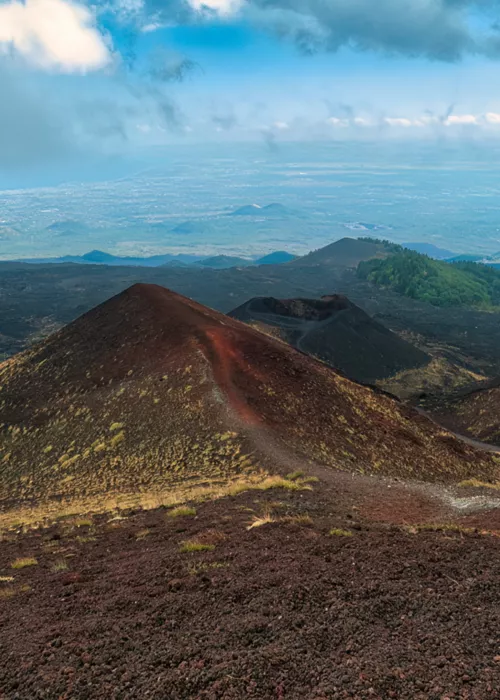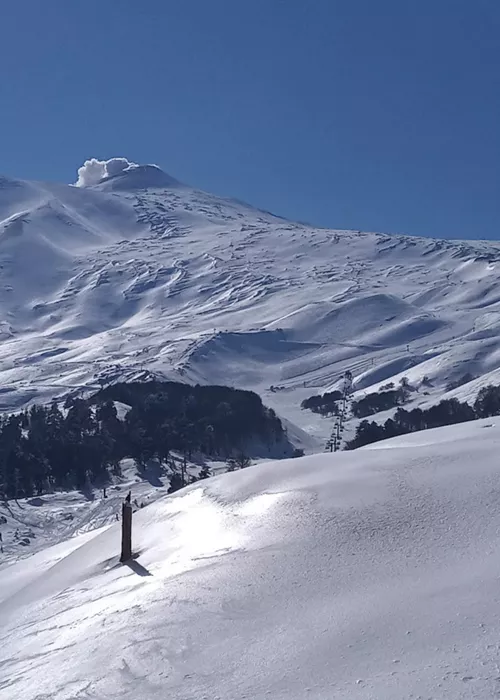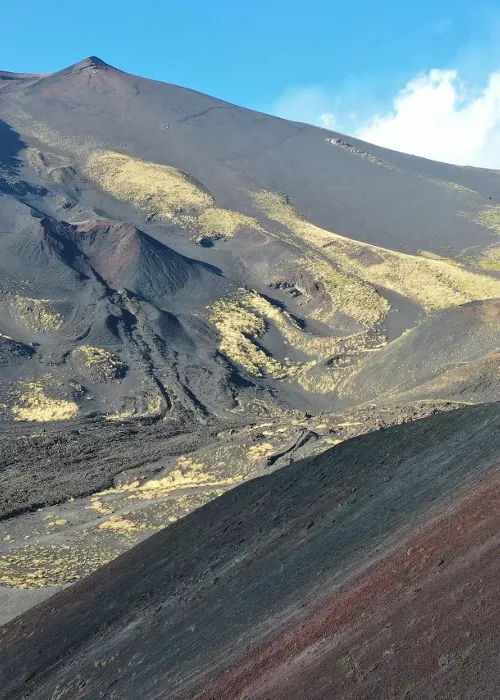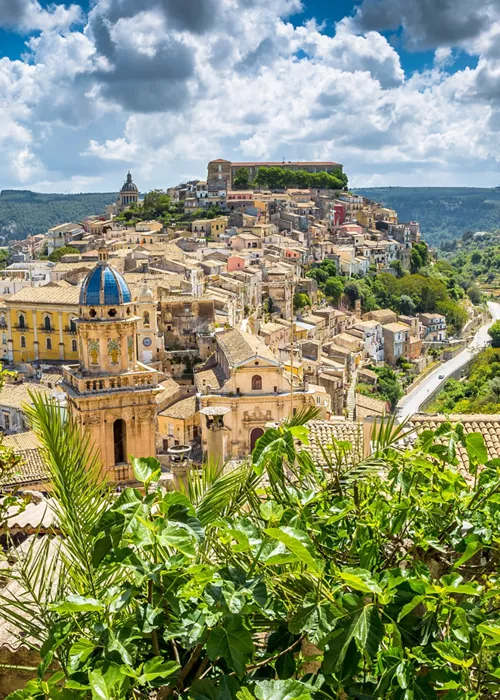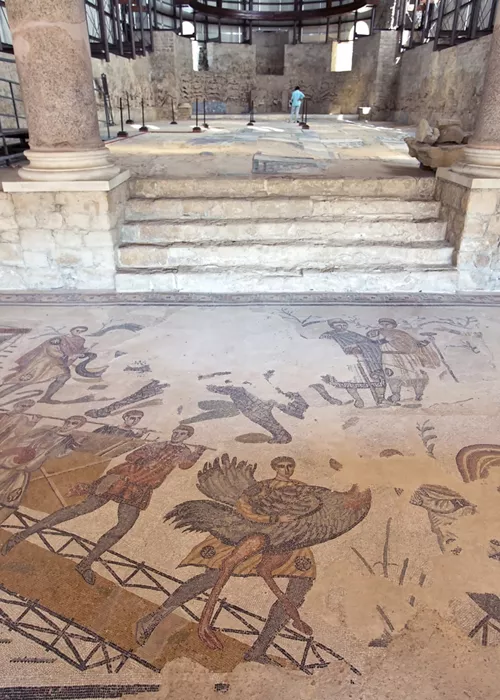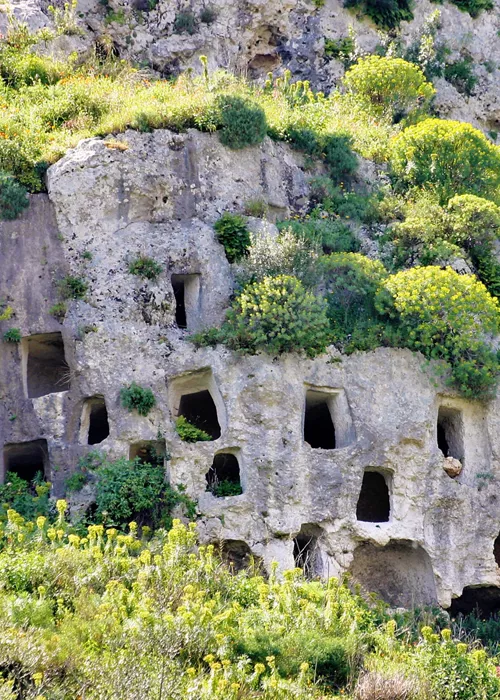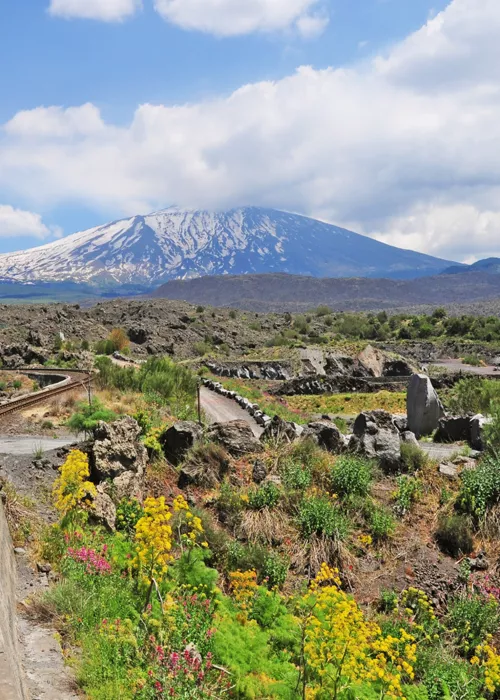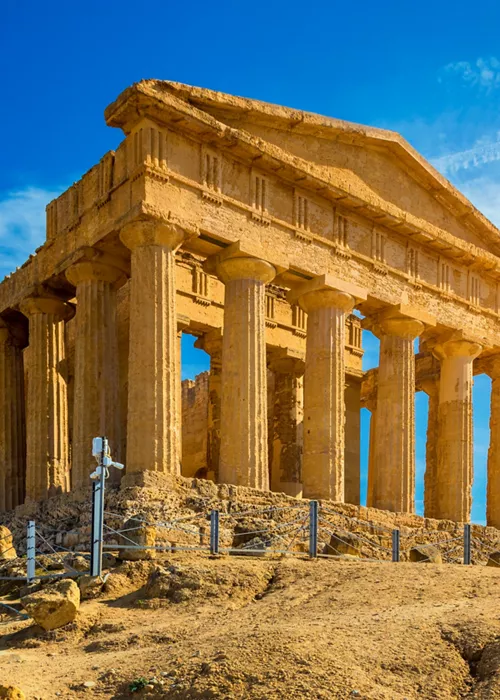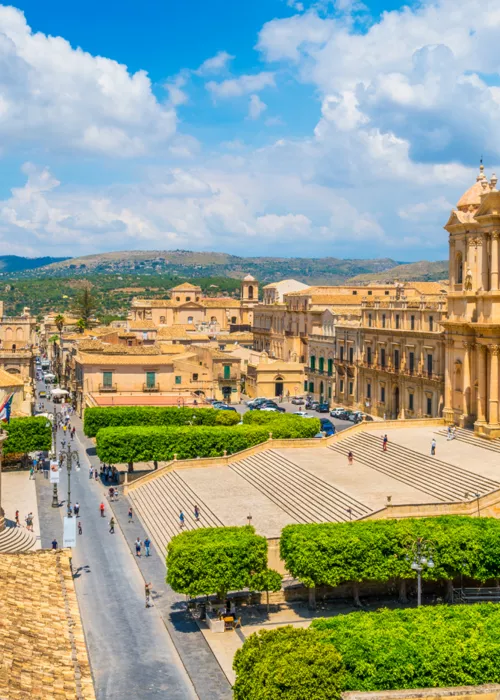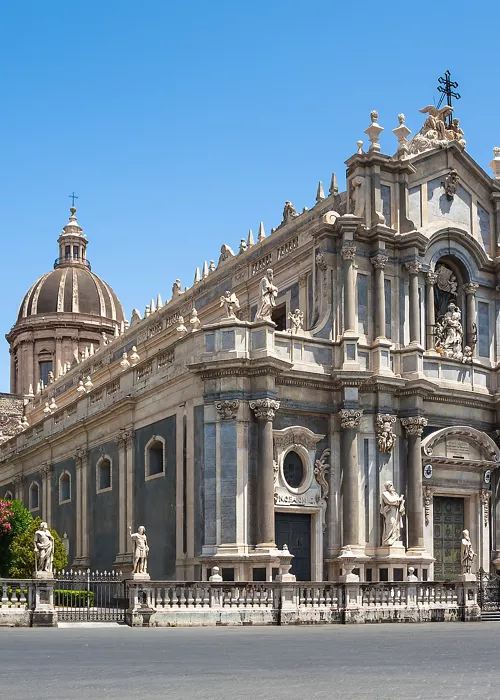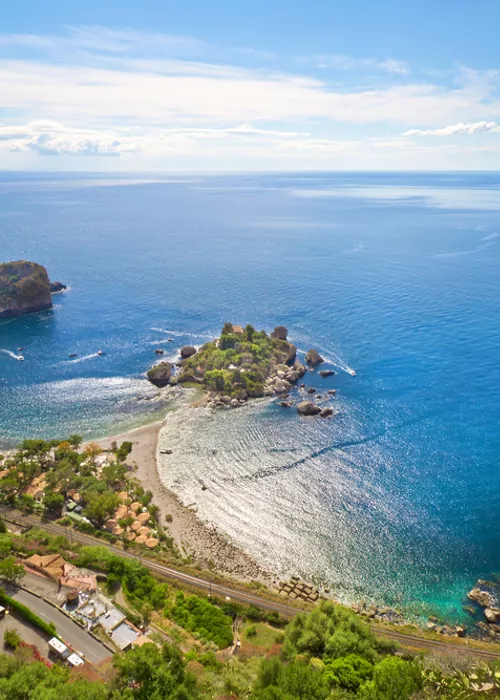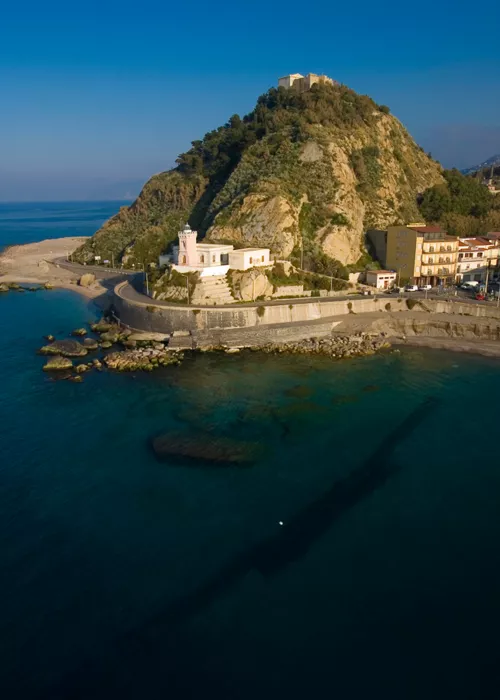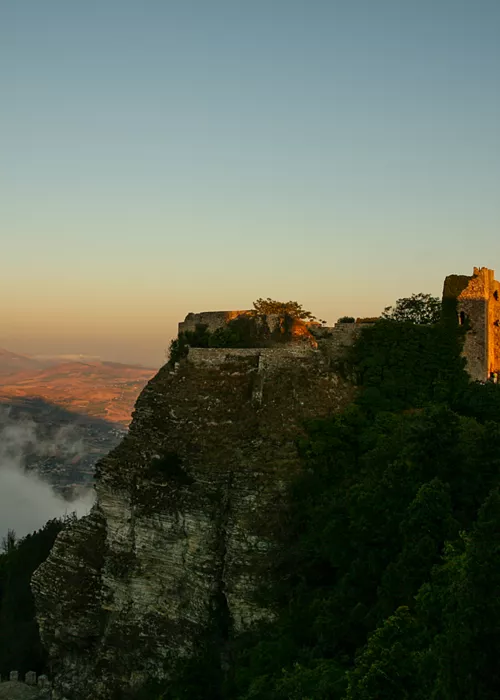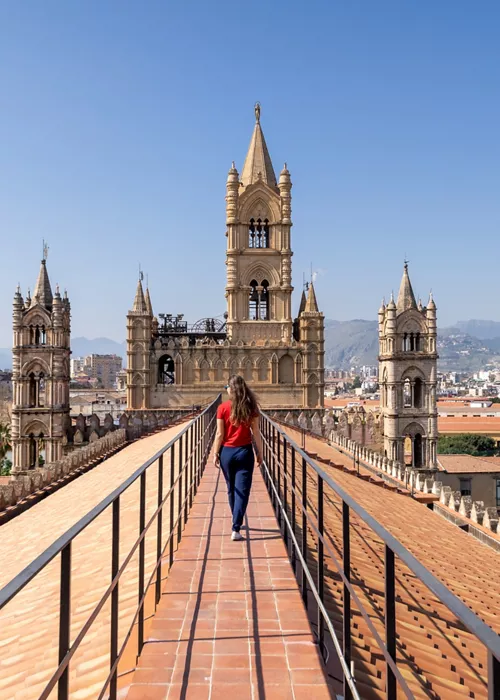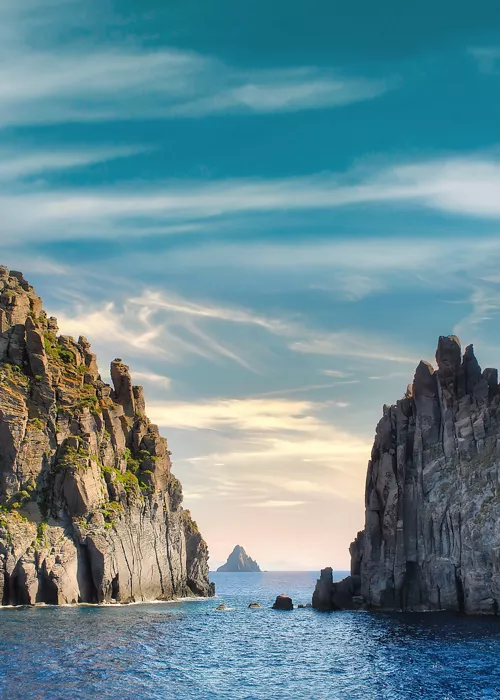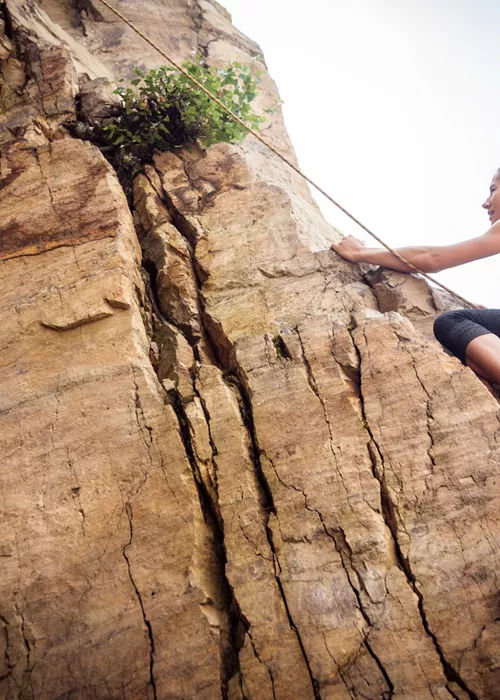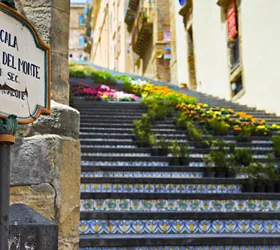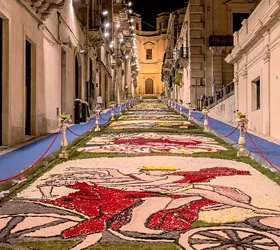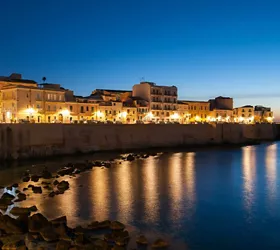Mount Etna
3 minutes
In the midst of a great geological and landscape range, between desert areas with volcanic rocks and dense, green forests, stands His Highness Mount Etna, or Muncibbeddu in Sicilian, Mongibello.
A symbol of Sicily across the world, it is the largest active volcano in Europe, as well as one of the highest in the world, and has been on the UNESCO World Heritage List since 2013.
Where Mount Etna is located and why it is so important
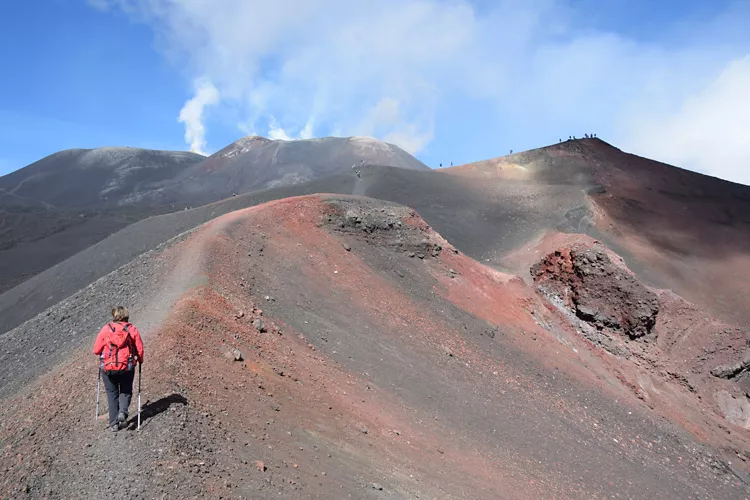
Mount Etna rises on the east coast of Sicily. We are in the beautiful province of Catania, not far from the Strait of Messina.
A complex stratovolcano, i.e. a volcano whose height varies over time due to eruptions, Etna dominates Catania from above, reshaping the landscape.
The surrounding landscape is a marvel: from the coastal strip overlooking the Ionian Sea to the countryside with its citrus groves and vineyards, passing through dense chestnut and oak forests to the barren nature near the summit of Mount Etna.
Inside the Etna Park Nature Reserve is the eastern slope of the volcano whose walls are characterised by deep canyons and the Grotta del Gelo, a cavity in which a perennial glacier has formed.
most evocative areas of the Etna Park Nature Reserve characterised by both pyroclastic and lava rock formations, deep canyons and the Grotta del Gelo, a cavity in which a perennial glacier has formed, we find the Valle del Bove, a volcanic depression in the shape of an enormous basin on the eastern slope of the volcano.
History and information on Mount Etna
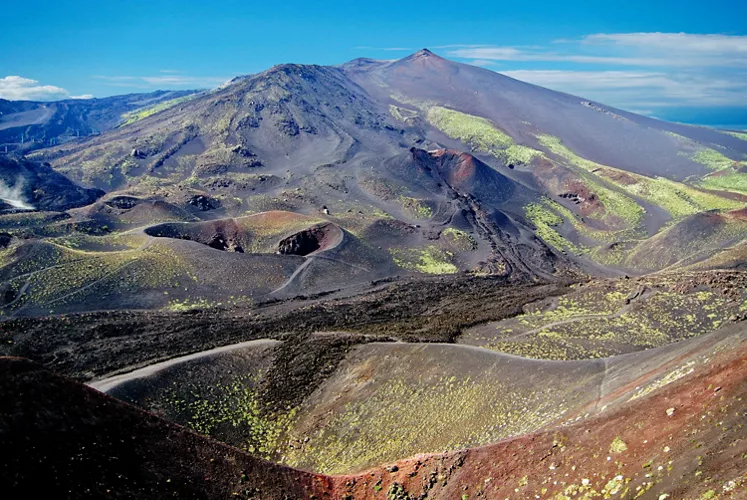
Etnaowes its origins to some submarine eruptions that, in the Quaternary period, i.e. about 500,000 years ago, also formed the Plain of Catania, previously occupied by a gulf.
There were numerous eruptions of Etna in Antiquity, more than 135.
The volcano erupted in the Middle Ages in 1329 and 1381, spreading terror among the local population, but the worst cataclysm occurred in 1669: the lava flow descended as far as the sea, partially devastating even the city of Catania.
More recently, the eruptions of 1910 left their mark, leading to the formation of 23 new craters.
Why Mount Etna is a UNESCO site
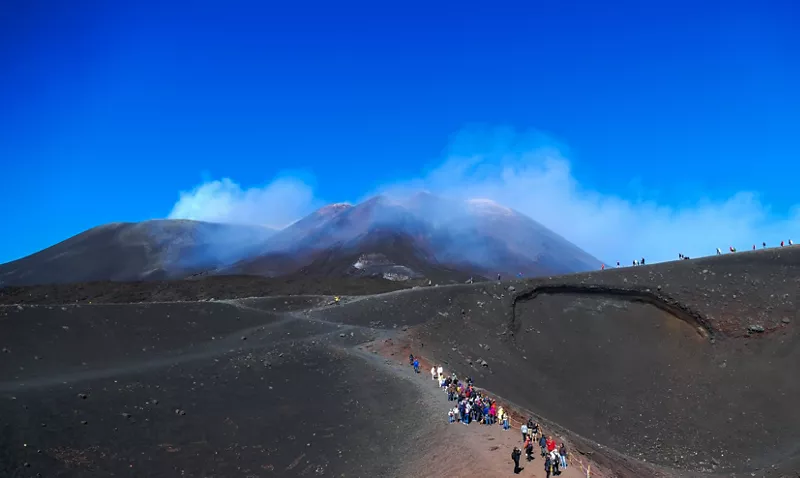
Acknowledged as Europe's most active volcano, Etna has become a UNESCO World Heritage Site thanks to its unique features: its ash, craters, caves and lava flows and the depression of the Bove Valley make it a privileged destination, an important cultural landscape and a strategic international research centre with a long history of influence on volcanology, geology and other earth science disciplines.
UNESCO has also emphasised that the scientific importance of the site, its notoriety, and its cultural and educational values are of global significance
What to do on Mount Etna: 4 alternatives for everyone
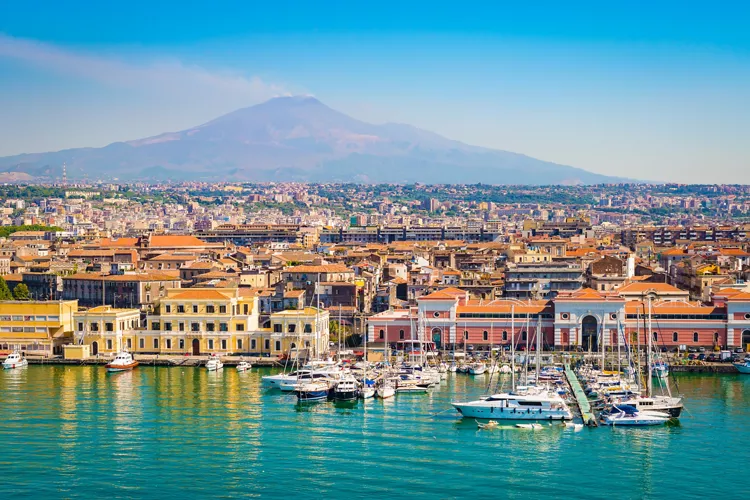
Among the most popular activities in this area are excursions to Mount Etna: the park and the volcano can be explored along numerous nature trails open to all, ideal for enjoying an unforgettable panorama.
Besides walking, an experienced trekker can choose to go trekking on Etna, or to get on a bike and take an Etna Mountain Bike Tour.
Lastly, an incredible experience is skiing on Etna: the ski resorts are Nicolosi, between 1,910-2,700 metres, and Piani di Provenzana - Linguaglossa, between 1,800-2,317 metres.
What to see on Mount Etna: 7 unmissable stops
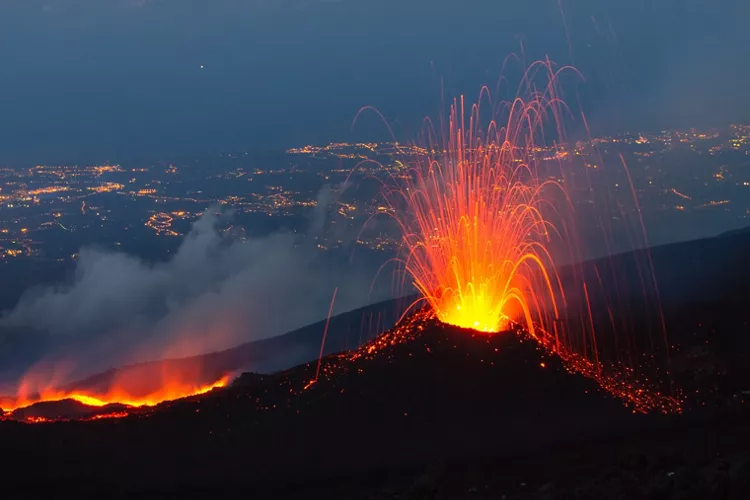
Make a note, because there are no less than 7 stops that you should not miss in order to get in tune with Muncibbeddu, starting with the Etna Park: created in 1987, its mission is to protect the unique natural environment surrounding the volcano. A wonderful vantage point within the Nature Reserve is the Valle del Bove, the wide basin where you can visit a hot crater and a lava tunnel.
Of great visual impact, Etna's summit craters are worth admiring: the Central Crater (consisting of Voragine and Bocca nuova), the North-East Crater and the South-East Crater.
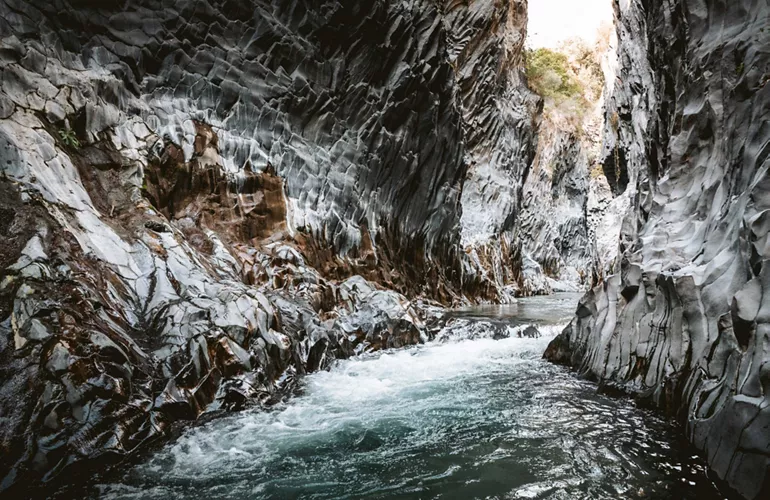
Inside Etna Natural Park’s protected zone, the Valle del Bove is definitely a must-see it is an enormous basin on the volcano’s eastern slope. In fact, all of Etna, whose heights reach to 3,281 ft, features extremely deep canyons and the Grotta del Gelo, a gigantic cavity in which a perennial snowfield makes its home.
Note the interesting Alcantara Gorges, formed by the erosive activity of the Alcantara River’s very cold waters over the course of centuries. For those seeking an adrenaline rush, it is also possible to move through the Gorges utilizing cables.

